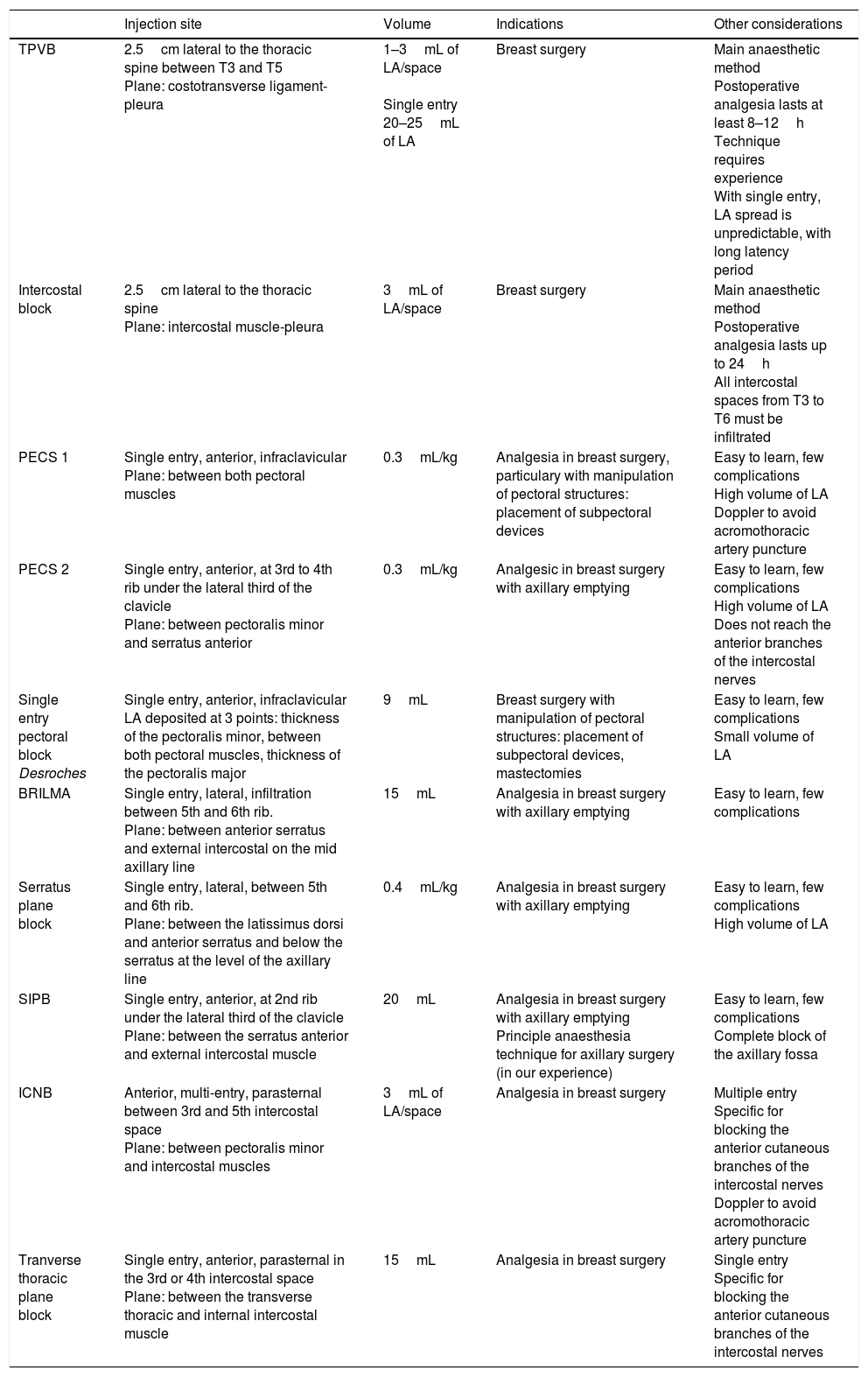The addition of ultrasound to locoregional anaesthesia in the last few years has led to the description of various fascial thoracic blocks with analgesic purposes: PECS 1 and 2 block, serratus plane block, serratus intercostal fascial block, blockade in the plane of the thoracic transverse muscle …, which have been added to other well-known nerve blocks, such as thoracic paravertebral block or intercostal block. In this sense, locoregional anaesthesia has been universally recommended in patients with severe respiratory processes in order to avoid ventilatory support and subsequent weaning that considerably increases postoperative morbidity and mortality rates. However, as regards thoracic wall and axillary hollow, there are very few references which detail the use of nerve or fascial blocks as a main anaesthetic method.
Two extreme cases are presented of multi-pathological patients with serious respiratory disease who successfully underwent a modified radical mastectomy plus surgery in the axillary space using a combination of ultrasound-guided thoracic blocks that allowed surgery without general anaesthesia, avoiding mechanical ventilation, and maintaining spontaneous breathing throughout the surgical procedure. The main indications of the anaesthetic blocks used are described, focusing on the performance of the technique and underlining, in a novel way, the possibility of facing aggressive surgery at the level of the armpit with only locoregional anaesthesia.
En los últimos tiempos la incorporación de la ultrasonografía a las técnicas de anestesia locorregional ha permitido la descripción de diversos bloqueos torácicos fasciales con finalidad analgésica: PECS 1 y 2, bloqueo del plano del serrato, bloqueo fascial intercostal serrato, bloqueo en el plano del músculo transverso torácico…, que se han añadido a otros bloqueos nerviosos ya conocidos como el bloqueo paravertebral torácico o el bloqueo intercostal. En este sentido, las técnicas de anestesia locorregional han sido universalmente recomendadas en pacientes con procesos respiratorios severos para evitar el soporte ventilatorio y posterior destete que incrementan considerablemente las tasas de morbimortalidad postoperatoria. Sin embargo, a nivel de la pared torácica y hueco axilar, son escasas las referencias que identifiquen el uso de bloqueos nerviosos o fasciales como método anestésico principal.
Presentamos 2 casos extremos de pacientes pluripatológicos con serio compromiso respiratorio que se someten de forma exitosa a mastectomía radical modificada más cirugía en el hueco axilar mediante una combinación de bloqueos torácicos ecoguiados que permitieron la cirugía sin necesidad de inducir anestesia general, evitando ventilación mecánica, y manteniendo durante todo el procedimiento quirúrgico y postoperatorio respiración espontánea. Describimos las principales indicaciones de los bloqueos anestésicos empleados, incidiendo en la técnica de realización de los mismos y subrayando de forma novedosa la posibilidad de afrontar una cirugía agresiva a nivel de la axila con solo anestesia locorregional.









